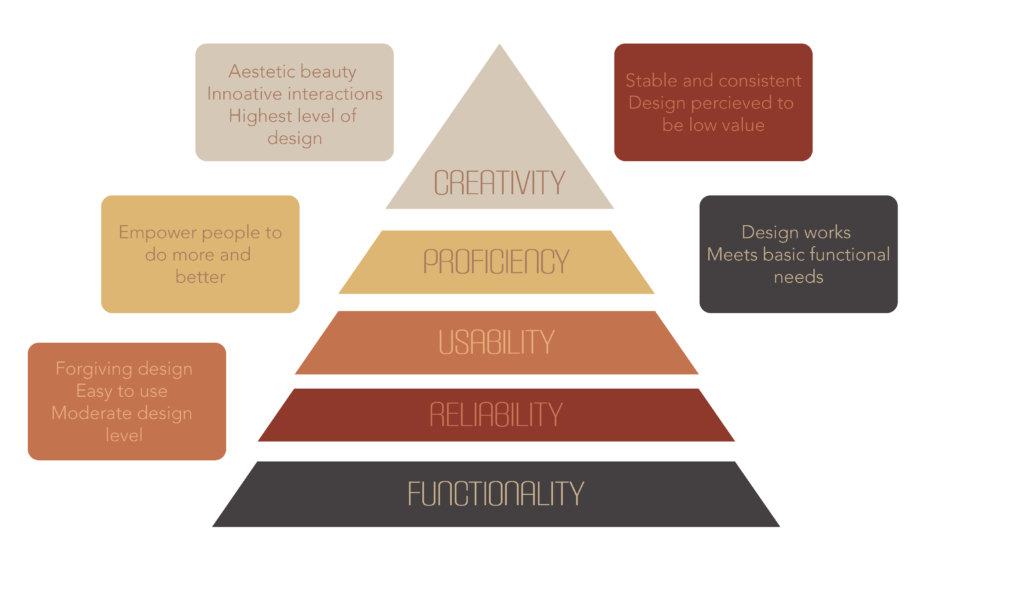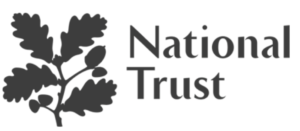Objective: To understand and evaluate the application of Maslow’s Hierarchy of Needs within my specific digital media specialism.
Specialism: UX/ UI design
Maslow’s Hierarchy of Needs originates from a psychological perspective. The original hierarchy of needs starts with Psychological needs, Safety needs, Belongingness, and Esteem needs, which results in self-actualisation at the top of the pyramid.
Maslow believed that when an individual achieved self-actualisation, they were “living their full potential and becoming who they really are.” This statement is very interesting as this highlights how accomplishing the lower levels of the pyramid assists in unlocking success and accomplishment. How might we as designers incorporate this into our industry to achieve the same “potential”?
My interpretation of the design hierarchy of needs:

Case Study : The National Trust website
The National Trust is a well-known, charitable organisation that is dedicated to the preservation and protection of natural and cultural heritage sites in the United Kingdom.
They have a lot of visitors to their website which means that the website should fulfil the hierarchy if needs in order to unleash full potential.

Click here to access the website
How does the website cater to the HONs?
Functionality:
- Navigation – the drop-down menu is easy to find and allows users to quickly find information
- Content Structure – the information on the website is well-organised through headings, subheadings and paragraphs
Reliability:
- Trustworthy – the website information comes from the company directly, the company itself is an established organisation
- Consistency – the website layout design is the same on every page and is clean and precise
Usability:
- Accessibility – the website is easy to access as it has features like alt text for images, keyboard navigation, and compliance with accessibility standards.
Proficiency:
- Empowerment – the website has a clear message on the website and promotes the company’s core values such as preservation and protection of nature.
Creativity:
- Visual design – the website has a clean and simplistic design that incorporates high-quality images
- Seasonal changes – depending on what season it is the website subtly changes the imagery
Are there any areas that the website could work on?
Usability: I think that the website would benefit from more interactivity within their website such as virtual tours, puzzles and games. This would allow the company to reach a bigger demographic and engage more people like families and children, as at the moment the company’s main demographic is older people (Calvium.com, 2017). By incorporating this the company would also support their original message of preservation and teaching the younger generation about protecting nature.
Future Outlook: How might my research exploring the HONs influence my semester one projects?
By researching the HONs, I realised that I could incorporate this into my semester one projects by:
- Understanding the fundamentals of what I want to achieve from my projects and create a structure that I can follow to ensure my designs are successful
- Conducting further research into why I’m designing the interface in a certain way and questioning whether the design will accomplish all the categories in the HONs
Sources:
Calvium.com. (2017). Interview: National Trust Creative Director, Ivo Dawnay – Calvium. [online] Available here
The (2019). Why Maslow’s Hierarchy Of Needs Matters. YouTube. Available here
Two Teachers (2021). Maslow’s Hierarchy of Needs Explained | McDonald’s Example | Motivation Theory. YouTube. Available here
National Trust. (2023). Home. [online] Available here